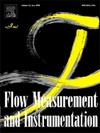Study on the flow field and steady-state hydrodynamics of a sliding valve with a sloping U-shaped throttle groove
IF 2.3
3区 工程技术
Q2 ENGINEERING, MECHANICAL
引用次数: 0
Abstract
Existing U-shaped throttle grooves in spool valves face issues such as unstable fluid flow, high-pressure drop, and uneven variation of flow area. This paper proposes a novel spool valve throttle groove featuring a sloped U-shaped configuration. Through theoretical derivation of mathematical models for flow areas of different throttle grooves combined with CFD simulation analysis of flow field characteristics and distribution patterns, the study reveals the influence of flow area change gradient on hydrodynamic forces. Furthermore, three-dimensional hydraulic spool valve models with different throttle grooves were established to analyze the effects of key parameters - valve opening (1 mm, 3 mm, 5 mm), pressure difference (1 MPa, 3 MPa, 5 MPa), and slope angle (6°, 12°, 18°) - on flow field characteristics and hydrodynamic behavior. Results demonstrate that the sloped U-shaped throttle groove exhibits more stable pressure and velocity distributions under varying openings and pressure differences, significantly reducing hydrodynamic force fluctuations with a maximum reduction of 59.72 %, thereby improving system stability and flow control accuracy. Experimental validation using a comprehensive hydraulic valve test bench confirmed the accuracy of the spool valve simulation model. The research indicates that the sloped U-shaped throttle groove effectively enhances spool valve system stability, extends component lifespan, and improves hydraulic control precision, providing theoretical support for designing and optimizing hydraulic spool valves.
倾斜u型节流槽滑阀流场及稳态流体动力学研究
现有滑阀u型节流槽存在流体流动不稳定、高压降、过流面积变化不均匀等问题。提出了一种新型滑阀节流槽斜u型结构。通过理论推导不同节流槽流道面积的数学模型,结合CFD仿真分析流场特性和分布规律,揭示了流道面积变化梯度对流体动力的影响。在此基础上,建立了具有不同节流槽的液压滑阀三维模型,分析了阀口开度(1mm、3mm、5mm)、压差(1mpa、3mpa、5mpa)和阀坡角(6°、12°、18°)等关键参数对滑阀流场特性和流体动力特性的影响。结果表明,在不同开度和压差下,倾斜u型节流槽的压力和速度分布更为稳定,显著减小了水动力波动,最大减小幅度为59.72%,从而提高了系统的稳定性和流量控制精度。利用液压阀综合试验台进行实验验证,验证了滑阀仿真模型的准确性。研究表明,倾斜u型节流槽有效提高了滑阀系统的稳定性,延长了元件寿命,提高了液压控制精度,为液压滑阀的设计和优化提供了理论支持。
本文章由计算机程序翻译,如有差异,请以英文原文为准。
求助全文
约1分钟内获得全文
求助全文
来源期刊

Flow Measurement and Instrumentation
工程技术-工程:机械
CiteScore
4.30
自引率
13.60%
发文量
123
审稿时长
6 months
期刊介绍:
Flow Measurement and Instrumentation is dedicated to disseminating the latest research results on all aspects of flow measurement, in both closed conduits and open channels. The design of flow measurement systems involves a wide variety of multidisciplinary activities including modelling the flow sensor, the fluid flow and the sensor/fluid interactions through the use of computation techniques; the development of advanced transducer systems and their associated signal processing and the laboratory and field assessment of the overall system under ideal and disturbed conditions.
FMI is the essential forum for critical information exchange, and contributions are particularly encouraged in the following areas of interest:
Modelling: the application of mathematical and computational modelling to the interaction of fluid dynamics with flowmeters, including flowmeter behaviour, improved flowmeter design and installation problems. Application of CAD/CAE techniques to flowmeter modelling are eligible.
Design and development: the detailed design of the flowmeter head and/or signal processing aspects of novel flowmeters. Emphasis is given to papers identifying new sensor configurations, multisensor flow measurement systems, non-intrusive flow metering techniques and the application of microelectronic techniques in smart or intelligent systems.
Calibration techniques: including descriptions of new or existing calibration facilities and techniques, calibration data from different flowmeter types, and calibration intercomparison data from different laboratories.
Installation effect data: dealing with the effects of non-ideal flow conditions on flowmeters. Papers combining a theoretical understanding of flowmeter behaviour with experimental work are particularly welcome.
 求助内容:
求助内容: 应助结果提醒方式:
应助结果提醒方式:


